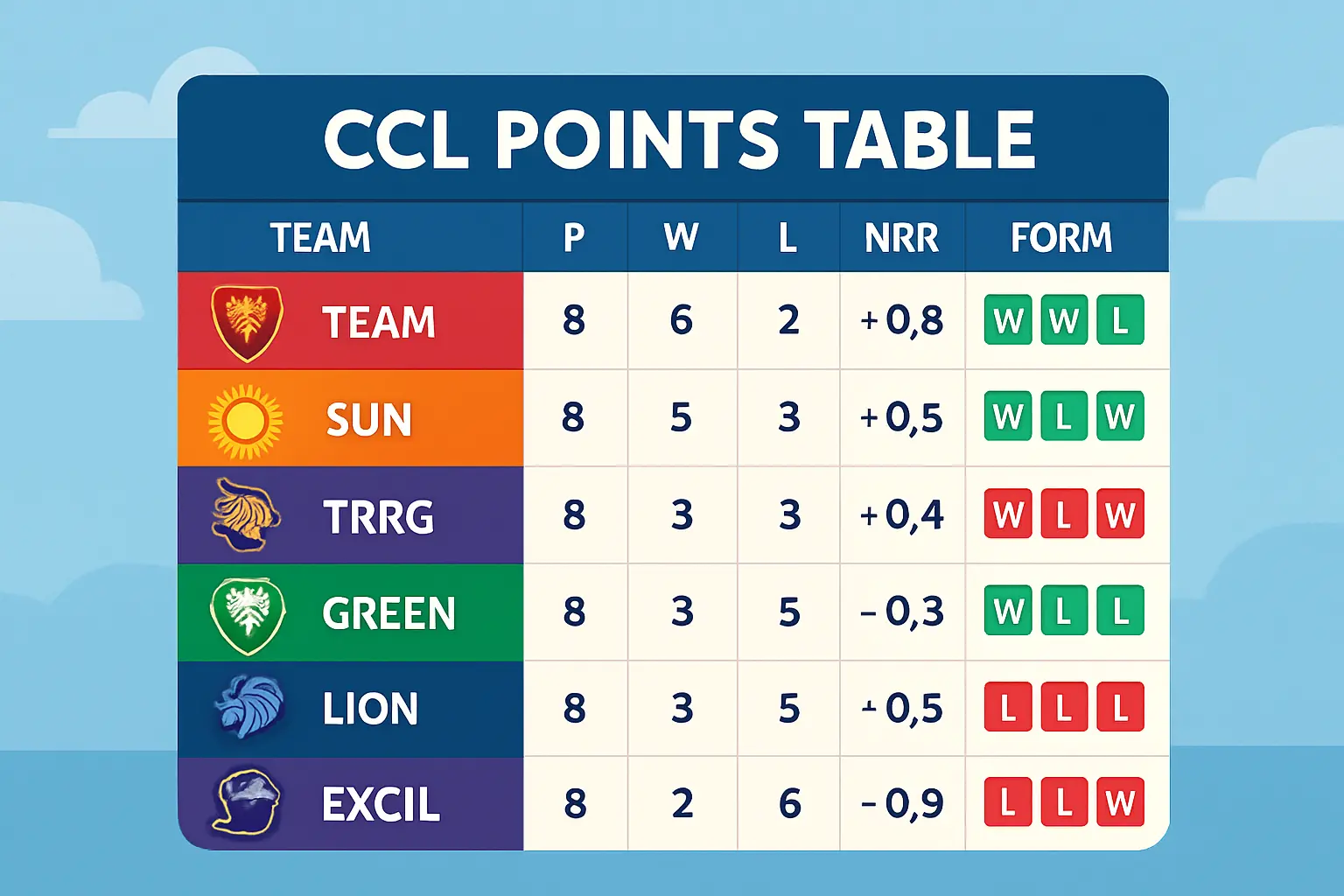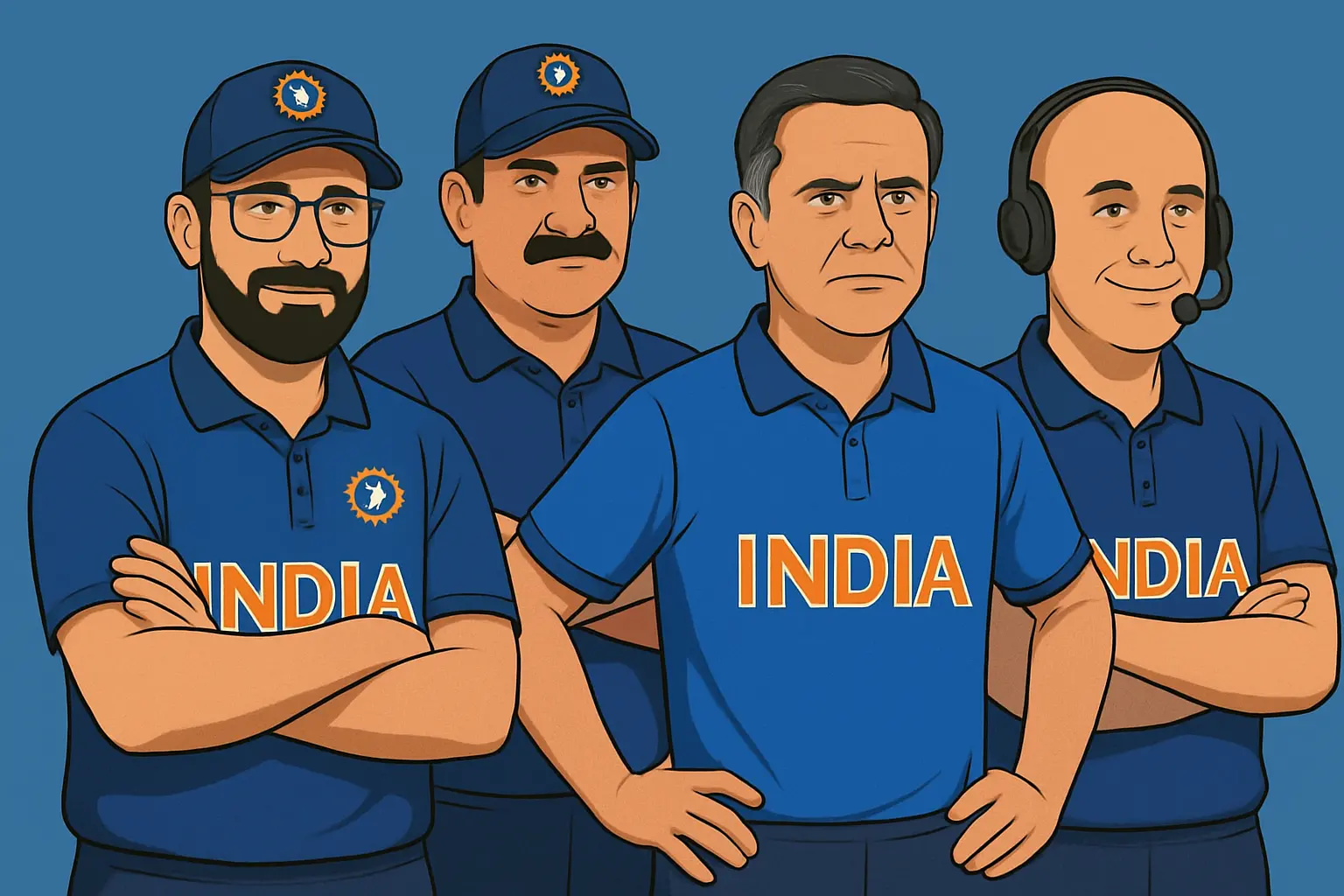Fab Four cricket refers to Virat Kohli, Steve Smith, Joe Root, and Kane Williamson — four modern masters whose consistency, versatility, and technique define elite batting in the current era, especially in Tests. The phrase fab four has become shorthand for a debate that never sleeps, a statistical arms race that keeps statisticians honest, and a human drama that draws crowds to the first ball of a morning session and the last ball of a tense chase.
Fab Four cricket meaning and why the term matters
The fab 4 in cricket speaks to more than just four excellent players. It is a compact way to describe a balance of styles, conditions, formats, and cricket cultures. Kohli’s high-stakes intensity and white-ball pedigree, Smith’s unorthodox genius and marathon appetite, Root’s tempo control and all-country improvement, Williamson’s late play and serene mastery. Together, they have set the standard for Test batting while shaping one-day and T20I tactics in more subtle ways.
The label grew organically through press boxes, commentary booths, and the Statsguru age. It made sense because the sport demanded owners of tough conditions and long tours, not just highlight packages. Coaches and bowlers began planning series as much around how to blunt these batters as how to win sessions. When you planned for India, you had a Kohli plan before you had a venue plan. When you prepared for Australia, you started by asking how to keep Steve Smith out of his bubble. England sessions were framed by Root’s tempo. New Zealand’s resilience was built on the idea that if Williamson got past the first half hour, you were playing catch-up.
How the fab four in cricket became the era’s shorthand
The phrase gained traction as each batter moved from promising to inevitable. After early breakthroughs, they began stacking away hundreds in hard places. Headlines compacted a sprawling narrative: Kohli, Smith, Root, Williamson — the fab four. The pakka Test nerds compared line-by-line averages, SENA vs Asia splits, fourth-innings composure, and captaincy effect. Broadcasters leaned into debate segments. The term stuck because each tour seemed to add a new wrinkle rather than settle the matter.
Powerful labels often warp nuance. This one has endured because it lines up with reality more often than it distorts it. All four have glory abroad, scars to show for harsher spells, periods of technical refinement, and the ability to change the air of a series by the way they bat.
The four batsmen, four distinct crafts
Virat Kohli — control through confrontation
Kohli’s cricket carries a thrum. He sets fields with his eyes even when he is not the captain. Technique-wise, he is classical at heart: high hands, decisive front-foot press, bat coming down late and straight. The balance is exaggerated by minimal backlift when he is leaving on length, exploding into full extension when he goes through extra cover. The famous cover drive is still the poster, but his Test engine is built on patient leaving outside off and wristy working through midwicket.
In white-ball cricket, Kohli’s chase blueprint changed an era. He turned risk management into a visual art. Running between the wickets became run creation. Spinners lost the luxury of lanes because he scores at will into pockets on the leg side. He is also prone to choosing a risk early to assert control — a loft in the powerplay or a hard sweep to break a field. When the game demands a sermon, he is the pulpit.
Steve Smith — an eccentric method that never breaks in the wind
Smith is the cricketer you would fail to coach if you met him young and insist you had always understood once he made it. His technique is data disguised as twitch. The leg-side shuffle buys him access to the line of off stump so he can leave on judgment while threatening the bowler with leg-side scoring when they straighten. His hands stay soft as a librarian’s papercut. He defends late with a blade angle that can milk singles, then levers into the short ball if it threatens his space.
In Tests, nothing wastes a bowler’s day quite like Smith batting on thirty for an hour and a half. In ODIs, his work often looks quiet until you notice he has welded a run-a-ball seventy. In T20Is, the toolkit is narrower, but the game sense compensates. He often preempts field placements and picks seams between them without showing his hand.
Joe Root — rhythm, angles, and the problem of permanent motion
Root’s batting has a hum. He steers pace like a fly-half making space for a winger. Short of a length on the fourth stump looks like a dot until he opens the face late and sends it fine of backward point. He is the most complete sweeper among the fab four in cricket. The conventional sweep off line and the reverse sweep to off-speed match-ups against spin radically changed his numbers in Asia and silenced the noise that he was only a home track master.
As captain he carried overwork into his early backlift at times, but the baseline remained elite. In ODIs, he is the perfect foil. Partners can erupt around him while he scores the same eighty it took two players to score in older eras. In T20Is, his float role is underappreciated: he is the batter that prevents collapse and accelerates without premeditation.
Kane Williamson — late play, soft hands, steel spine
Williamson is a delayed decision. His alignment is so neutral that he can play the same ball square through either side. Bowlers complain about the feeling that the line they just used is still the right one, yet the outcome keeps changing by an inch on the face. He rides bounce beautifully and meets swing with understatement. When he hits the on-drive, it feels like the ball walked itself to the rope.
Leadership enriched his batting rather than draining it. His ODI batting is a lesson in control under fielding restrictions. In Tests, he has a historian’s respect for graft and a sculptor’s eye for chance. When he gets in, he erases options for captains.
Fab 4 Test cricket — the advanced comparison that matters
The value of the fab four in Test cricket rests on repeatability under stress. The frame of comparison that holds up:
- Career longevity with sustained peaks rather than random spikes.
- Home vs away balance, including SENA tours and Asian sojourns.
- Fourth-innings composure and impact in chases or rearguards.
- Performance vs top-ranked attacks and in marquee series.
- Captaincy effect on output.
- Conversion rate and innings-per-hundred.
A quick, high-level cheat sheet for Test comparisons
| Metric | Likely leader among the Fab Four | Notes |
|---|---|---|
| Overall Test average | Steve Smith | High to upper fifties across a massive sample, built on long innings and big series spikes |
| Innings per hundred | Steve Smith | Hundred frequency outpaces peers markedly in prime years and remains strong |
| Conversion rate 50 to 100 | Steve Smith or Kane Williamson | Smith’s conversion is historically exceptional; Williamson’s in the same conversation |
| Home average | All strong; Smith and Williamson edge | Kohli and Root excellent; Smith and Williamson slightly ahead by average |
| Away average | Smith and Williamson narrowly | Root’s away record surged after tactical tweaks; Kohli’s away numbers strong in Australia |
| SENA average | Smith clear, Williamson close | Kohli’s Australia exploits shine; Root’s England home is elite, away SENA improved |
| Asia average | Root and Williamson | Root’s sweep toolkit altered outcomes; Williamson’s patience and late play travel well |
| Fourth-innings average and impact | Root and Williamson by stability; Kohli for chase tempo | Smith has big fourth innings too; context varies by match situation |
| Vs top-ranked attacks | Even split; Smith and Kohli lead for impact, Root for volume, Williamson for big-match steadiness | Depends on sample window, but elite across the board |
| Captaincy impact on batting | Kohli net positive, Root neutral to positive, Williamson positive, Smith steady | Leadership did not dent standards; Kohli often elevated under responsibility |
Career snapshot without overfitting to single numbers
- Steve Smith: Test average in the high fifties over a long span, headlining with an unmatched century frequency and series-defining runs in hard places. Home and away both elite. In SENA combined, he is the benchmark.
- Kane Williamson: Test average in the mid-fifties, with a late-career surge that pushed it toward the Smith neighborhood. Fewer Tests than the other three, but astonishing consistency and conversion once set.
- Joe Root: Test average around the fifty mark across high volume. The clean sweep-and-reverse evolution materially changed his Asia record and made him a comprehensive away batter, not just an English accumulator.
- Virat Kohli: Test average in the high forties to around fifty, bolstered by peak sequences and standout tours in Australia. White-ball supremacy sets him apart in all-format conversations, while his best Test years rival anyone’s for impact.
Home vs away, and SENA vs Asia
The fab four Test cricket debate narrows when you emphasise away records in tough conditions. That is where separation shows.
In SENA:
- Smith in SENA: Numbers sit on their own throne. He produced remorseless output through multiple tours, often while being targeted with bespoke plans.
- Williamson in SENA: Technically sound, rarely dominated but steadily building match-shaping hundreds. A master of the first hour who gets more dangerous after fifty.
- Kohli in SENA: Commanding in Australia with transportable back-and-across alignment and a willingness to ride the bounce. In England he answered the channel with a fuller game, leaving better and driving fewer.
- Root in SENA: England home is his citadel, but the away jump happened with a fearless sweep game and tempo that ignored reputation. In Australia he often starts better than he finishes but rarely looks out of place.
In Asia:
- Root overtook reputations with sweeps and late hands that dismantled spin straitjackets. One of the most remarkable away recalibrations by a non-subcontinental batter.
- Williamson’s patience and trigger discipline translate perfectly to low-and-slow. He plays under his eyes. He barely sweats.
- Kohli’s command vs spin is elite; his seam play on Asian tracks is underappreciated because the narrative fixates on drives. He milks singles during slow phases and flips matches after drinks breaks.
- Smith deals with reward-risk in Asia by stretching deep into the crease and picking length late, a strategy that keeps edges soft and lbw threats minimal.
Fourth innings and run chases
Chase discussions often conflate average with vibe. What matters is decision pace, not just strike rate. Each of the fab four batsmen has produced fourth-innings innings that reframed series.
- Root in rearguard or chase mode finds the third man fence like a homing pigeon, and his denial of dot-ball pressure is worth an extra wicket to his side.
- Williamson is ice in a small chase and a metronome in a big one. When an attack overpitches in search of magic, he turns the chase into a spreadsheet.
- Kohli lifts a dressing room with stakes. He takes early responsibility, often aims to be there at the end, and the singles between long-on and deep midwicket rarely dry up.
- Smith’s fourth-innings narrative is quieter, but he is a breaker of hope. The moment a side senses a door, he closes it with five backfoot pushes in a row and a clipped two.
Versus top-ranked teams and in marquee series
You cannot build a fab four cricket argument on small sample edges. Across broad samples:
- Smith’s body of work vs England and India is a thesis. Bowler after bowler built plans to bounce him out of rhythm; he banked runs anyway.
- Kohli’s away tours to Australia and pivotal home series showed appetite for the biggest bull. Those runs sat heavy in scorecards.
- Root’s output against Australia and India defines his career volume. Across long sequences, nobody in this group has more base hits.
- Williamson’s consistency against Australia and India is less headline-grabbing because he rarely plays for the biggest market, but within the dressing room he is the batter you plan a whole day around.
Captaincy effect
- Kohli’s leadership sharpened his batting in Tests. He set scoring intent early and rarely let sessions drift. He turned declarations into psychological tools and batted accordingly.
- Root’s captaincy is a paradox. The load grew, but the runs never fell through the floor. He played some of his most fluent away batting while carrying a transitional side.
- Williamson remained Williamson, which is a compliment of the highest order. The more he led, the calmer his batting felt.
- Smith’s post-captaincy chapter simply proved that the method is bigger than the title. The production line kept humming.
Conversion rate and innings-per-hundred
- Best conversion: Smith and Williamson share the throne depending on the window you slice. Both are ruthless once set.
- Innings per hundred: Smith leads by a street across a large sample, the aspect that most cleanly separates him in Tests.
- The trick in this stat is not to overvalue periods when batting conditions were easier. Each member’s best conversion came not because pitches were flat but because they found gears for different phases.
Fab Four ODI records and how they truly compare
White-ball batting, especially in ODIs, should not be measured only by hundreds. Value creation across phases is the real currency: powerplay survival or exploitation, middle-overs control, and end-phase acceleration.
- Kohli remains the most complete ODI batter among the fab four. He holds the most ODI hundreds and the most hundreds in chases in this set, and he is the finest chaser of his generation. The blend of low-risk accumulation with surgical boundary bursts is unmatched. His partnership running is a run engine in its own right.
- Root is the understated ODI genius. A metronome at one-drop, he eliminates collapse risk, absorbs leg-spin without dot-ball drag, and shapes totals by denying bowling sides a quiet middle. When others fire, he finishes with a run-a-ball eighty without synthetics.
- Williamson is the most precious resource for New Zealand ODI batting. He hits traditional cricket shots through a packed ring, farms strike against unfavorable match-ups, and takes chases as if deadlines were suggestions. His strike rotation versus pace is a coach’s presentation for academies.
- Smith in ODIs is still a run-value positive despite a less explosive ceiling. He picks lengths early, manipulates fields, and provides stable elevators for innings that require reset-and-surge.
Fab four ODI records distilled into practical takeaways
- Best in chases: Kohli
- Best against high-class spin in the middle overs: Root and Williamson
- Best at strike-rate-neutral rebuilding from early collapse: Williamson and Smith
- Best at converting fifties to match-winning hundreds: Kohli
Fab Four T20I records and adaptability
None of the four made their reputations in T20I, yet adaptiveness still separates them.
- Kohli’s T20I positioning mirrors his ODI chase craft: set base, hold shape, choose match-ups, finish mortality. He thrives on angles and running, with a surge when the bowler misses wide of off.
- Root in T20I is misunderstood. He is worth gold at three in tricky conditions or in knockout cricket where accident avoidance is priceless. He unlocks boundary opportunities by forcing captains into protection fields early.
- Williamson’s T20I value is often contextual. He reads totals better than most captains, calibrates risk as if reading a laptop in the middle, and models the safest path to par or above.
- Smith’s T20I record is the least decorated, but he remains effective in anchor roles when tracks are two-paced. He is a problem-solver more than a dasher.
Technical micro-battles that define the fab four in cricket
- Kohli vs wobble seam outside off: The counter was less cover drive and more leave, later as the ball softened he cashed in straight and through midwicket.
- Smith vs around-the-wicket angle: The shuffle complicated off stump; bowlers tried back-of-length into ribs. He rode it, waited for the drag down, and cashed to square leg.
- Root vs skiddy off-spin: Went to the sweep and reverse as stock scoring shots, turning dot clusters into picket fences.
- Williamson vs high pace on hard length: Absorbed with late hands and neutered the splice. When the ball went fuller, the straight bat punished.
Iconic innings and what they revealed
Virat Kohli
- Adelaide stonework in the daytime followed by high-tempo counters after tea on a quickening surface. He shifted balance just enough to let the ball come without flirting in front of his eyes.
- Chasing under lights in white-ball cricket with a field set to protect square, he manufactured twos, stole singles in the ring, and did not force aerials until the equation demanded it.
- A defiant century in England that rewired the narrative of his off-stump. Not the most flamboyant, but the most mature.
Steve Smith
- Twin centuries in an Ashes opener when the ball seamed and swung early. He entered the bubble, left on judgment, and punished when the attack tried to bulldoze him out with plan C.
- The Sydney marathon where he turned a good pitch into a punishment of predictable line and length. Patience as weapon, not concession.
- A match-defining century at a neutral venue in Asia, picking length from the hand and covering the inside edge with bat angle late.
Joe Root
- A winter of runs in Asia built on sweep maps that shifted fields into discomfort. He controlled the innings tempo like a spin whisperer.
- Headingley dominance where he left nothing to chance against seam. High backlift, late ball contact, and scoring outlets opening every over.
- A chase with a partner in red-hot form where he never fought for spotlight, only for percentages. Elite cricketing ego sublimated to team pressure needs.
Kane Williamson
- A grim-ton on a two-pace surface at the Basin, steering a side from danger to command with shots that never once felt riskier than they needed to be.
- A fourth-innings anchor in a championship final played on slow seam, where he turned dot-ball pressure into ergonomic singles and let a partner play the victory strokes.
- A Perth epic where length discipline from hostile quicks met head position from a run machine who would not chase width until the ball was old.
Best among the fab four by format and context
Tests
- Overall: Steve Smith by a nose for career average and century frequency, with Williamson the nearest by per-innings quality and away balance. Root owns volume and adaptability; Kohli owns high-scarcity runs in tough series and is king of the intangible momentum swing.
- In SENA: Smith clear, Williamson close, Kohli strong in Australia, Root improved away but still just short of Smith’s mountaintop.
- In Asia: Root and Williamson as the most plug-and-play against spin and low bounce. Kohli a heavyweight in home and away subcontinental conditions. Smith remains elite, just a shade behind on typical Asian surfaces.
ODIs
- Kohli as the archetype. Root and Williamson are the rhythm section that makes a band great. Smith is the glue in rebuilds.
T20Is
- Kohli’s record and chase presence top the internal set for impact. Root and Williamson carry value depending on conditions and team balance.
Fab Four vs Fabulous Five — where Babar Azam fits
Babar Azam turned a barbershop debate into a boardroom topic. The fab 4 vs babar azam discussion is about timing and body of work by format.
- Tests: Babar’s technique is textbook and his away game is improving. He has authored match-winning Test hundreds under pressure and carries a national batting load that compresses error tolerance. To sit fully inside the all-time fab four Test club, he needs deeper away sample in the hardest conditions and a longer window of conversion so high that his average and innings-per-hundred write their own headlines.
- ODIs: Babar already belongs in any modern fab list. The run rate, control of chase pace, and shot-making through cover and midwicket put him alongside the best top-order batters of this era.
- T20Is: Strong. His publicity sometimes creates an unfair strike-rate debate divorced from role and conditions. In reality he is a foundation player at the top, especially when paired with a complementary aggressor.
Whether you label it modern fab five cricket is a matter of taste, not data poverty. If you expand the club to include all-format dominance, Babar has a compelling seat.
The next gen after the fab 4 in cricket
- Marnus Labuschagne: The Smith echo with his own cadence. Compact method, high repeatability, hunger for long innings, and an off-stump discipline that travels.
- Shubman Gill: A balance merchant with silk wrists and high ceiling in all formats. Drives on the up like a prince but is learning to leave like a banker.
- Harry Brook: Strike boundary maker in red ball and white ball. Handles pace with courage and spin with force. Early career graph suggests middle-order elasticity and match-turning tempo.
- Others in the watchlist include travelers of hard tours who lean into technique over hype. The next fab four will be defined by away hundreds and fourth-innings poise as much as by league cricket highlights.
Advanced stat frames to understand fab four test records
A few deep-cut frames that stand up in any fab four cricket analysis:
- Runs percentage when team top order collectively fails. Everyone can score in cheery conditions; these four made runs when the rest fell away. Root and Williamson often carry on those days; Kohli and Smith erupt to kill hope.
- Balls faced per dismissal in the first thirty deliveries. Early survival is the true premium. Smith and Williamson are elite here; Root and Kohli not far behind but with slightly different risk profiles.
- Boundaries per false shot. Smith and Williamson convert fewer structural mistakes into dismissals; Kohli and Root have higher positive intent that still rarely tips into recklessness once set.
- Dot-ball percentage after fifty balls. Root’s tick-tick late hands reduce dots. Williamson’s straight-bat geometry forces field changes. Kohli engineers singles where others see a feint. Smith starves bowlers with awkward lengths.
A practical comparison board for Test context
| Category | Edge within Fab Four | Why it matters |
|---|---|---|
| Series-defining repeatability | Smith | He compiles multi-Test dominance, not just single-innings classics |
| All-condition technique | Williamson | Most neutral setup, best late decision-maker |
| Tempo control vs spin | Root | Sweeps and rotation, neutralising tactics in Asia |
| Run-chase personality | Kohli | The mind game of chasing becomes a plan, not a panic |
| Captaincy uplift | Kohli and Williamson | Batting kept or raised under the heaviest diary |
| Hundred frequency | Smith | Innings-per-hundred and conversion rates that tilt series |
| Marathon appetite | Smith and Williamson | Build first-innings walls that set up games |
| Counterpunching ability | Kohli and Root | Turn pressure spells into momentum swings |
Fab 4 in SENA countries and in Asia — nuance over narrative
- New Zealanders often play fewer marquee tours compared to India, England, and Australia. That context can hide the scale of Williamson’s away mastery. Sample size is smaller, not standards.
- Kohli’s magnetism sometimes makes fans overlook how classically he adapts in England and South Africa. His biggest away scores were not gifts of flat tracks; they were amendments to his off-stump romance.
- Root’s Asian runs were a coaching manual on how to rewire a game in mid-career without losing identity. He moved from tidy to commanding with a single change, then doubled down by making it his stock option.
- Smith’s SENA record is therapy for batting perfectionists. When pitches nibble and bowlers find seam, he answers with picks, tucks, and a bottom hand that releases pressure rather than creating it.
Fab four centuries and conversion in narrative form rather than ledger
- Smith’s hundreds arrive like an airline with a loyal schedule. When he passes fifty, you pour another coffee because you sense the next session will be his.
- Williamson’s hundreds do not avalanche as often, but their quiet quality and the way they insulate a dressing room are priceless.
- Root’s hundreds look like they could be nineties every over until they are suddenly beyond reach. He denies bowlers the heroic moment as ruthlessly as any of the four.
- Kohli’s hundreds carry theater. You remember the bow, the roar, the message to the dressing room, the control masquerading as fury.
How bowlers attacked the fab four and how they adapted
- Short leg-side bait and around-the-wicket angle vs Smith met patience and a refusal to hook into the plan unless he was already past fifty.
- Fourth-stump temptations with a heavy slip cordon vs Kohli brought forth the hard leave and the compact drive only when the length deserved it.
- Wrist spin into the rough against Root backfired once he made the reverse sweep normal rather than novelty.
- Hard length and narrow off-side fields against Williamson got dragged into singles and twos with just enough last-instant bat face adjustment.
Why fab four cricket still captures imagination
Numbers alone do not sustain a storyline this long. Stadiums lean in when they bat because their methods radiate intent without recklessness. Young batters study them because their blueprints are transferable. Coaches use their games as case studies because they represent four distinct answers to the same problem: how to score heavily without giving the game away.
The white-ball era keeps accelerating. The Test calendar keeps bending to commercial wind. Yet in the five-day format these four remain the north star. They are simultaneously throwbacks and futurists.
Methodology and sources used to ground this analysis
- ESPNcricinfo Statsguru for career splits by venue region, opposition strength banding, innings filters, and phase metrics like fourth-innings averages.
- ICC rankings snapshots to understand peak windows and consistency bands without anchoring to single-period anomalies.
- HowSTAT filters for conversion rates and innings-per-hundred trendlines.
- Match notes from major series including Ashes campaigns, Border–Gavaskar contests, England–India home-and-away duels, trans-Tasman series, and World Test Championship milestones.
- Ball-by-ball reads and wagon wheels were considered to frame tactical points on sweeps, shuffles, and late play.
These sources allow reproducible comparisons and reduce bias from highlight memory. Numbers evolve with every series, but the relative signals hold firm unless there is a dramatic form shift. Use the same filters and you will see the same shapes.
Key takeaways for fans and analysts
- In red-ball cricket, Smith has the strongest case on pure numbers, Williamson the closest shadow on per-innings value, Root the economist of accumulation and adaptation, Kohli the patron saint of momentum and all-format aura.
- In ODIs, Kohli sets the standard for chasing and volume of match-winning hundreds. Root and Williamson are irreplaceable mid-overs governors. Smith remains an efficiency machine in rebuilds.
- In T20Is, match role and conditions matter. Kohli maintains the best blend of average and pressure execution within the group.
- Home vs away matters more than raw average. SENA mastery and Asian fluency build the full picture.
- Conversion rate and innings-per-hundred separate not only talent but temperament. Smith’s advantage here is the last word in many Test debates.
Fab 4 cricket explained for new fans, in concise statements
- Who are the Fab Four in cricket: Virat Kohli, Steve Smith, Joe Root, and Kane Williamson, modern era batting leaders with special emphasis on Test dominance.
- Fab four cricket meaning: A shorthand for the four best Test batters of the era across conditions, used widely in analysis and commentary.
- Why they are called the Fab Four in cricket: A label born in press and broadcast circles to group four contemporaries who matched each other in output and prestige while offering contrasting methods.
- Fab Four Test records vs ODI vs T20I: Tests are the spine of the debate, where Smith holds a numerical edge. Kohli owns one-day batting arguments within the group. T20I comparisons depend heavily on role and conditions; Kohli has the strongest impact case.
- Is Babar Azam part of the Fab Four: He is increasingly framed as part of a modern fab five, particularly due to white-ball excellence and a rising Test portfolio.
A compact, update-friendly comparison board
| Context | Strongest Fab Four profile right now |
|---|---|
| Overall Test excellence | Steve Smith |
| All-format argument | Virat Kohli |
| Asian spin mastery | Joe Root and Kane Williamson |
| SENA away consistency | Steve Smith, with Williamson close |
| Chase temperament across formats | Virat Kohli |
| Captaincy without batting dip | Virat Kohli and Kane Williamson |
| Hundred frequency and conversion | Steve Smith |
| Adaptation through tactical change | Joe Root |
The human texture behind the numbers
I have watched Smith turn a premium new-ball spell into a quiet drift, as if he moved the game to a different room. I have seen Kohli take strike to an off-spinner with deep midwicket back, attack the space once, then park the shot for the next five overs, mining ones and twos until the bowler was out of the attack. I have watched Root reverse-sweep a leg-spinner first ball after drinks as if it were a net drill, changing the field and the mood in the same second. I have sat behind Williamson’s guard as he let a good length ball go so late the wicketkeeper took it near his knee, and understood why quicks feel they are bowling to a hologram.
These are not tricks. They are disciplined solutions. They also explain why bowlers talk about them with equal parts admiration and fatigue.
What the next decade of fab four discourse will value
- Durability in a squeezed Test calendar. Big tours in tough places will mean even more.
- Batting in day-night Tests where balls behave like mood swings. The late decision-maker will eat best.
- Tactical evolution versus match-up analytics. The reverse sweep and the late cut are not just shots but negotiation tools against data-savvy captains.
- Leadership without bat drag. Sides will expect their stars to mentor the next gen while staying at elite output.
The fab four, logically arranged in one last table for clarity
| Attribute | Kohli | Smith | Root | Williamson |
|---|---|---|---|---|
| Test batting identity | Assertive classicism | Eccentric precision | Rhythmic manipulation | Late-play orthodoxy |
| ODI role | Chase architect and finisher | Rebuilder and rotator | Middle-overs governor | Field disassembler and captain brain |
| T20I value | Pressure-proof anchor | Situational stabiliser | Float technician | Risk calibrator |
| SENA strength | Australia apex | Across SENA apex | England apex, improved away | Consistent across SENA |
| Asia strength | Elite vs spin and reverse | Smart adaptation | Sweep-led domination | Calm mastery |
| Hundreds pattern | Theatrical and timely | Relentless and frequent | Flowing and inevitable | Quietly towering |
| Captaincy effect | Elevated | Steady | Stable | Elevated |
Final word — why fab four cricket endures
Different nations, different methods, same outcome. Bowlers alter lengths and angles, captains adjust fields, fans argue about aesthetics versus averages. And this quartet keeps making runs. They have shown across formats that you can win cricket by doing the simple things deeply: judge length early, commit to a plan, respect the ball that deserves it, and make the bowler earn your wicket. The fab four in cricket endure because their methods are both teachable and uncopyable, familiar and singular.
If greatness in cricket is the art of turning hard days into common days, then the Fab Four did something rarer. They took the hardest periods of the game and made them look like work they had chosen. That is why the debate remains electric. That is why scorecards read differently when their names appear. That is why the phrase fab four will continue to live wherever the first hour of a Test feels like the beginning of a story and not a mathematical exercise.











